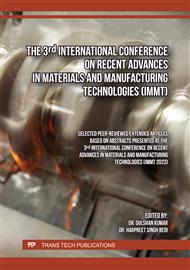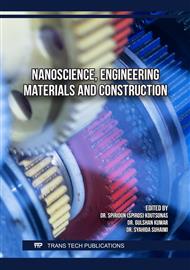p.11
p.21
p.29
p.39
p.51
p.59
p.79
p.91
p.105
Effect of Material Modeling on Prediction of Isothermal Formability of AA6082-O Sheet at Elevated Temperature
Abstract:
Aluminum alloy sheets are widely considered for manufacturing lightweight thin-walled structural components in the automotive and aerospace industries. However, the poor formability of the material at room temperature is still a technical challenge. Warm forming evolved as a promising technology where the sheet metal is deformed at elevated temperatures below the recrystallization temperature. Numerical modeling is vital in the modern scenario to better understand formability and to improve the designing of tooling for complex sheet components during warm forming. Hence, it is imperative to understand the accuracy of material models on formability predictions at elevated temperatures. This work presents the effect of three yield criteria, namely, von Mises, Hill-48, and Barlat-89, on the formability predictions of AA6082-O sheet at elevated temperature, say, 200 °C. Analytical necking-based Marciniak-Kuczynski forming limit diagrams (MK-FLD) at the elevated temperature were predicted by incorporating these yield models. The accuracy of predicted MK-FLDs was validated with experimental data. Furthermore, finite element (FE) modeling of limiting dome height (LDH) tests was performed using sample sizes that developed deformation modes towards biaxial, plane strain, and uniaxial modes. The effect of different yield models on the forming behavior was studied in terms of part depths and major surface strain distributions. The compatibility of yield criteria on accuracy in prediction was assessed by overlapping with the experimental data. It was demonstrated that Barlat-89 was best suited compared to Hill48 and von Mises yield models.
Info:
Periodical:
Pages:
51-57
Citation:
Online since:
April 2025
Authors:
Keywords:
Price:
Сopyright:
© 2025 Trans Tech Publications Ltd. All Rights Reserved
Share:
Citation:



